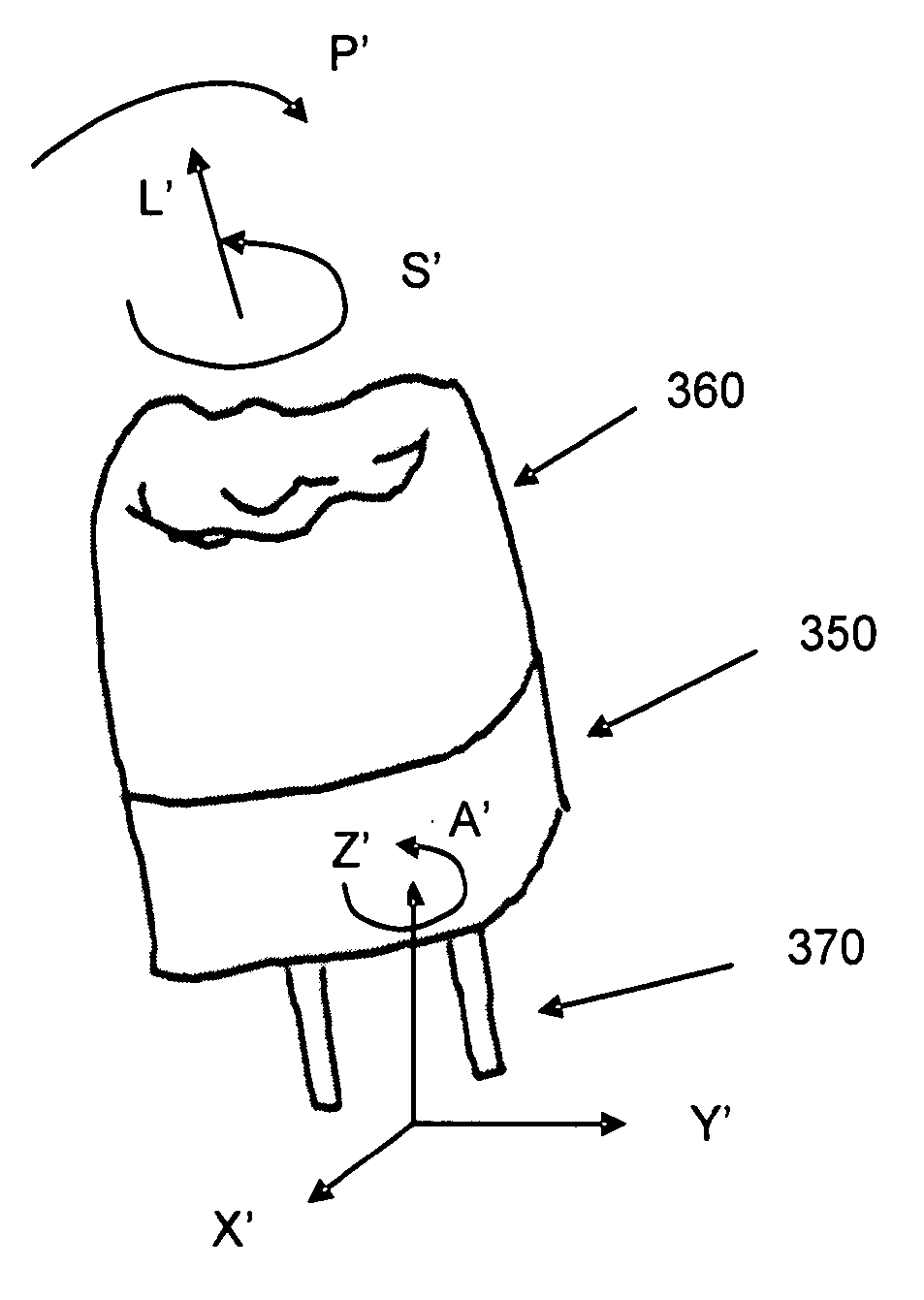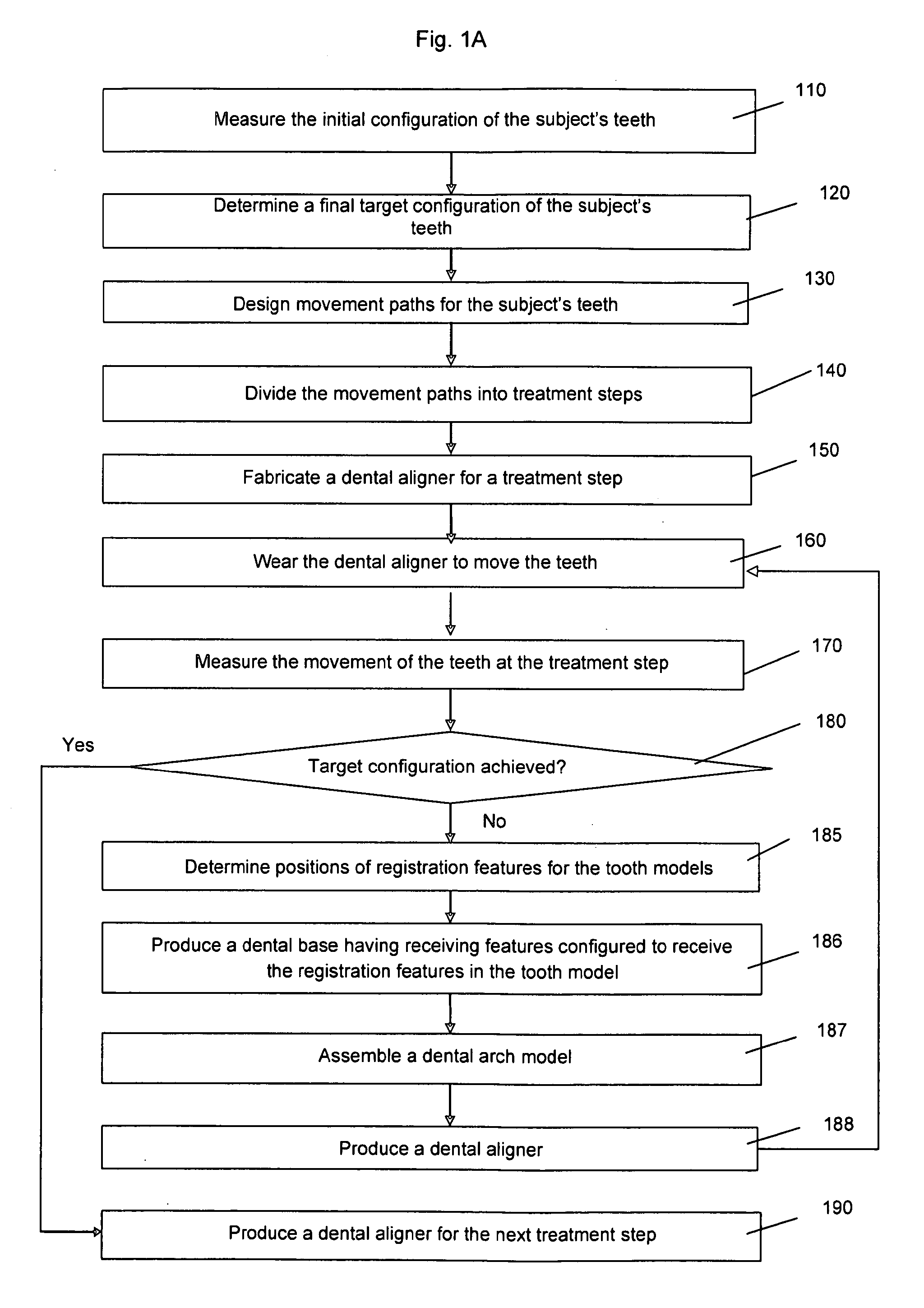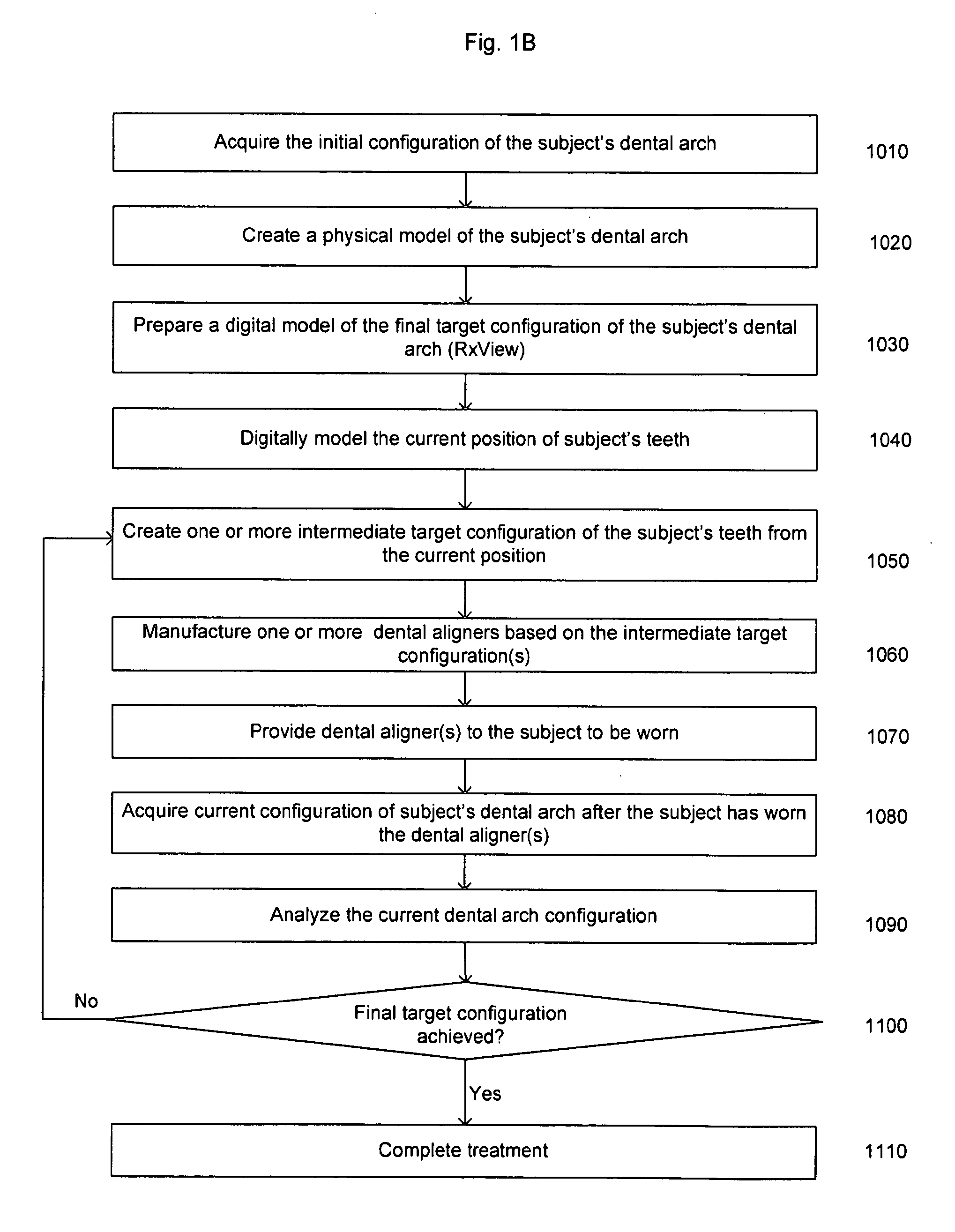Treatment of teeth by aligners
a technology for aligners and teeth, applied in the field of orthodontics, can solve the problems of difficult (if not impossible) to accurately estimate the three-dimensional bend of wires, difficult (or impossible) to determine the ideal bracket location, and difficulty for a human being to accurately develop a visual three-dimensional image of an orthodontic structure. , to achieve the effect of reducing treatment time and cost, enhancing comfort, and reducing treatment costs
- Summary
- Abstract
- Description
- Claims
- Application Information
AI Technical Summary
Benefits of technology
Problems solved by technology
Method used
Image
Examples
example 1
Treatment Method with Feedback
[0145]FIG. 1A illustrates one method for providing orthodontic treatment for a subject using feedback. First, the initial configuration of the subject's dental arch(s) is measured 110. The initial configurations of the subject's teeth can include the positions and the orientations of the subject's teeth before the treatment begins. The analysis of the initial configuration of the subject's teeth can include making dental impressions of the subject's upper and / or lower arches. A digital model of the subject's dental arches can then be produced. The surface locations of the dental impressions can be measured to determine the positions and the orientations of the subject's teeth, as described above and in the incorporated references. For example, details of conducting measurement on dental impressions are disclosed in the above referenced U.S. patent application Ser. No. 11 / 013,159, titled “Producing a base for accurately receiving dental tooth models” by ...
example 2
Manual determination of Movement Path and Intermediate Target Configurations
[0188]In one variation, the method of producing removable orthodontic appliances (aligners) relies upon a technician to initially set the intermediate target configurations (treatment steps). The aligners are made of clear plastic and are molded to fit snugly over a subject's teeth, as described above.
[0189]Overall, the treatment system includes a series of aligners, each of which has a configuration that differs slightly from the untreated position of the subject's teeth. Each aligner exerts pressure upon the subject's teeth, forcing the teeth to conform to the configuration of the aligner. When the subject's teeth have conformed to the configuration of a particular aligner, the subject moves on to a new aligner. In general, the treatment process is finished when the subject's teeth have reached the configuration desired by the treating clinician.
[0190]FIG. 1B illustrates the steps followed by one variation...
PUM
 Login to View More
Login to View More Abstract
Description
Claims
Application Information
 Login to View More
Login to View More - R&D
- Intellectual Property
- Life Sciences
- Materials
- Tech Scout
- Unparalleled Data Quality
- Higher Quality Content
- 60% Fewer Hallucinations
Browse by: Latest US Patents, China's latest patents, Technical Efficacy Thesaurus, Application Domain, Technology Topic, Popular Technical Reports.
© 2025 PatSnap. All rights reserved.Legal|Privacy policy|Modern Slavery Act Transparency Statement|Sitemap|About US| Contact US: help@patsnap.com



